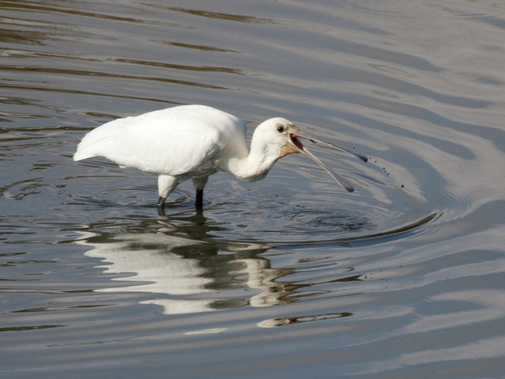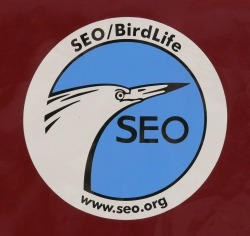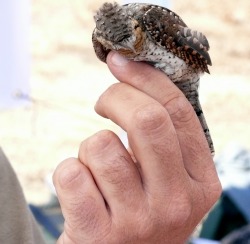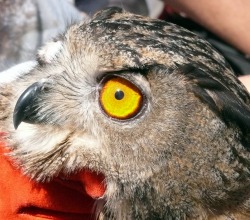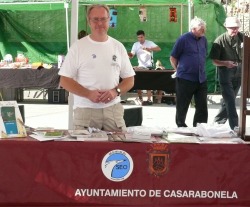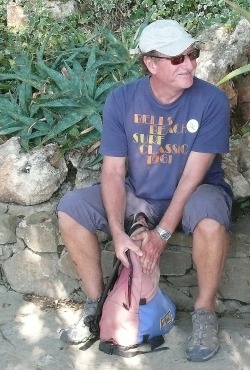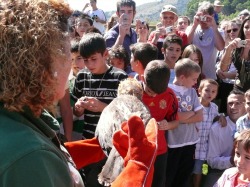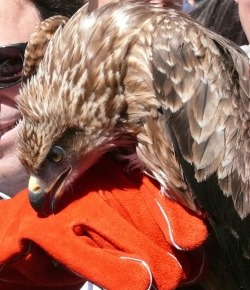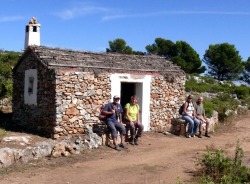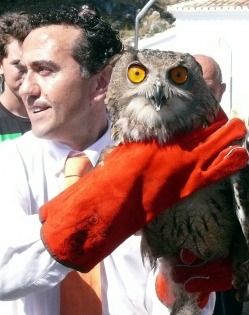News and Events
Friday 17 September 2010
Upcoming Events
Where necessary/appropriate further details can be found on the Axarquia blog (link on following page) at:
http://birdingaxarquia.blogspot.com
http://birdingaxarquia.blogspot.com
Autumn Field Visits:
The first meeting of the Autumn has been completed when the six of us present managed to record a magnificent 54 species, including a rather splendid Booted Eagle, numerous waders and a "wide-mouthed" Spoonbill. Full details of the visit are now available on the blog (link on page 4).
Now we can look forward to the Charca de Suarez reserve near Salobrena on the last day of the month followed, in mid-October, by a visit to the old railway track at Ventas de Zafarray and Alhama de Granada. By this time we might be able to consider when to visit Fuente de Piedra in the hope that the Cranes will have once more returned for their winter resting site.
As always, full details will be sent out to all on the Axarquia Bird Group mailing list and "non-members" are most welcome to get in touch via email for inclusion on same.
Email: [email protected]
Bob Wright
Slender-billed Curlew (Zarapito Fino Numenius tenuirostris)
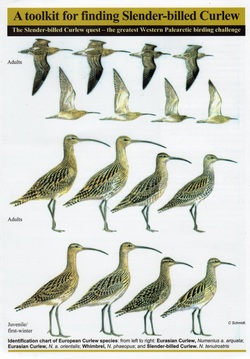
Join in the great hunt for the Slender-billed Curlew which, according to many if not most, may now be extinct. The bird's normal migration route is from Siberia to Morocco so all birders in our part, and suitable neighbouring areas, should keep their eyes open for this very illusive wader - just in case. Smaller than a Curlew and more Whimbrel size, the adjoining reference chart may be of some help.
For further information visit the specialist web site at:
www.slenderbilledcurlew.net
For further information visit the specialist web site at:
www.slenderbilledcurlew.net
Caribbean Visit

For those interested in the birds of the Caribbean, I have now completed a report including birds seen and a selection of photographs.
Follow the link opposite or CLICK here
Axarquia Bird Group
Thursday 25 February saw the latest visit of the Axarquia Bird Group when 10 members gathered at Fuente de Piedra for a last look at the Cranes before the latter's return north. A total of 51 species were recorded and a full account can be found on page 3 by following the link.
Axarquia Bird Group
Future Visit dates (All Thursdays at 9.30 - unless otherwise stated.)
30 September: Charca de Suarez, meet 10 am
14 October: Ventas de Zafarraya
(Details to follow as soon as available)
Future Visit dates (All Thursdays at 9.30 - unless otherwise stated.)
30 September: Charca de Suarez, meet 10 am
14 October: Ventas de Zafarraya
(Details to follow as soon as available)
Tarifa Bird fair
Go to BLOG and follow link for more information about this year´s Tarifa International Bird Fair to be held from Friday to Sunday, 24 - 26 September.
2009 Report

Summer Migration Dates
I have compiled a list of arrival and departure dates for seven popular summer visitors. Whilst I am able to show the average dates for the past five years, as yet I am unable to include the table with the specific dates for each year per species. When I can find out how to paste a "table" the document will be completed - and can be updated on an annual basis.
For more information and details CLICK HERE.
For more information and details CLICK HERE.
Annual Birds Total for Spain.
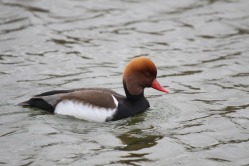
Now that the Annual Report for the Axarquia Bird Group has been completed and published (see opposite) I have found time to look at my personal totals for the past year. For the third year running I have exceeded 200 species with a new (Spanish) high of 223 birds. When I add the 13 other species recorded back in the UK, the total number of species for 2009 reaches 236 birds. (NOTE: The UK figure is merely the birds NOT recorded in Spain, not the total number of birds seen in the UK!) These figures compare with the 193 birds seen in Spain in 2008 with a corresponding number of 14 seen in the UK giving a total for that year of 207 birds.
The numbers of birds seen for the seven years is as follows and very much reflects the increasing amount of time that I have been able to devote to birding in recent years plus far more care with recording:
2009: 223 + 13 Total 236
2008: 193 + 14 207
2007: 201
2006: 158
2005: 122
2004: 110
2003: 51
In looking at the detail, two birds, Bullfinch (Camachuelo) Pyrrhula pyrrhula and Common Starling (Estornino Pinto) Sturnus vulgaris were actually seen in Spain whereas in previous years they would only have been recorded back in the UK.
Similarly, an additional 46 species were recorded in 2009 compared with the previous year including 7 raptors and 7 warblers. On the other hand, 15 of the birds recorded in 2008 were not recorded last year. Surprisingly, this group included Subalpine Warbler (Carruca Carrasquena) Sylvia cantillans and Penduline Tit (Pajaro Moscon) Rem.
Looking back, perhaps the best sightings were of the immature Ruppell's Vulture seen over Tarifa in September and the first sightings of a Great Bustard near Osuna in early November. Conversely, disappointments included not recording Barbary Partridge (Perdiz Moruna) Alectoris barbara during my stay at Jews Gate, Gibraltar in April, either White-rumped (Vencejo Cafre) Apus caffer or Little Swift (Vencejo Moro) Apus affinis at Bolonia or a Bonelli's Eagle (Aguila-azor Perdicera) Hieraaetus fasciatus.
CLICK HERE to view my complete list for 2009.
The numbers of birds seen for the seven years is as follows and very much reflects the increasing amount of time that I have been able to devote to birding in recent years plus far more care with recording:
2009: 223 + 13 Total 236
2008: 193 + 14 207
2007: 201
2006: 158
2005: 122
2004: 110
2003: 51
In looking at the detail, two birds, Bullfinch (Camachuelo) Pyrrhula pyrrhula and Common Starling (Estornino Pinto) Sturnus vulgaris were actually seen in Spain whereas in previous years they would only have been recorded back in the UK.
Similarly, an additional 46 species were recorded in 2009 compared with the previous year including 7 raptors and 7 warblers. On the other hand, 15 of the birds recorded in 2008 were not recorded last year. Surprisingly, this group included Subalpine Warbler (Carruca Carrasquena) Sylvia cantillans and Penduline Tit (Pajaro Moscon) Rem.
Looking back, perhaps the best sightings were of the immature Ruppell's Vulture seen over Tarifa in September and the first sightings of a Great Bustard near Osuna in early November. Conversely, disappointments included not recording Barbary Partridge (Perdiz Moruna) Alectoris barbara during my stay at Jews Gate, Gibraltar in April, either White-rumped (Vencejo Cafre) Apus caffer or Little Swift (Vencejo Moro) Apus affinis at Bolonia or a Bonelli's Eagle (Aguila-azor Perdicera) Hieraaetus fasciatus.
CLICK HERE to view my complete list for 2009.
New Year and 2009 Annual Report
First of all, a very Happy, Healthy and Prosperous New Year to you all.
Saturday 2 January I was able to make the first visit birding visit of the New Year, spending the morning at Fuente de Piedra with Andy Paterson and then on the the Laguna Dulce on the Campanillos road. A total of 43 species including a couple of Lesser Flamingo in with the thousand plus Greater Flamingos, Cranes, Stone Curlews, Lapwings and Golden Plover flocks - not to mention three Reed Buntings, a Bluethroat and Raven. Full detail;s, as usual, can be found on the blog (see page 3).
A full report and analysis will appear later, probably on the blog, detailing the birds seen in 2009. I have just completed the count and the final total was 236 species with 223 seen in Spain and the remaining 13 back in the UK.
The Axarquia Bird Group's first "Annual Report" has now been completed complete with illustrations and only awaits posting on the website for readers to read/download as they wish. Hopefully, two illustrated versions will be available; one in A4 portrait format and the other in reduced printing on A4 landscape so that it can be printed back to back, folded and stapled to give an A5 size pamphlet. I hope ou all enjoy the finished product.
I look forward to meeting many of you again during the coming year. The next Axarquia Bird Group visit will be to the ponds of the Guadalhorce, Malaga on Thursday 14 January.
Future visits will include Fuente de Piedra to see the Cranes before thay depart north in February and then the mountains and small pool at Alhama de Granada in March. Again, I expect both visits to take place on a Thursday, provisionally the 25 February and 18 March respectively.
Best wishes
Bob Wright
Back home in the Axarquia
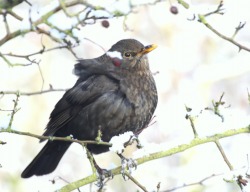
Now back from our UK visit to spend Christmas with the family, the 2009 Report has been completed and I have made a start on selecting photographs to illustrate the booklet. It's not just we in te south of Spain who have Cranes for the winter months; there is a flock of 200 plus busy feeding in the very south of France near Mimizan.
First for Casa Collado
Cranes on 8 December
Just called out of the house (13.30) by Jenny to look up and see 11 Cranes ( Grulla Comun - grus grus) flying over in a "V" formation (and calling according to Jenny) towards the left of Periana which would, I calculate, put them on a direct course for Fuente de Piedra. Probably there by now!
Axarquia Bird Group Annual Report
Those of you who have been following the "sister" blog will know that I have made a start on producing an "Annual Bird Report" for the Axarquia Bird Group based on our visits to a variety of sites during 2009. The idea, when completed, will be that the Annual Report can be accessed directly from this page. I will post a link to the left under "Awaited News". To see the present state of preparation refer to the link on the left.
Fuente de Piedra

Cranes taking to the air
A marvellous turn out for the visit to Fuente de Piedra to find the Cranes, Little Bustard and Stone Curlews with 23 brave souls braving the elements. Dry but very cloudy and cold. This is the third consequive vist that we have been greeted by less than perfect wether following a sunny previous and following day! Is somebody trying tio tell me something?
Anyway, despite the cold and lack of birds on arrival, we did find at least 300 Cranes, 60 plus Little Bustards and a solitary Stone Curlew before taking lunch back in Fuente de Piedra.
A full report can be found on the blog (see page 3).
Anyway, despite the cold and lack of birds on arrival, we did find at least 300 Cranes, 60 plus Little Bustards and a solitary Stone Curlew before taking lunch back in Fuente de Piedra.
A full report can be found on the blog (see page 3).
Guadalhorce, Malaga - 26
Despite the early mornmig rain and following cloud, 11 of us met for the visit including four from Salobrena and 2 from Canillas de Albaida. A very fruitful and enjoyable morning with only one short, but heavy, shower whilst we were at the hide overlooking the "hidden pool". A total of 48 species recorded. See blog for a full report.
Bob
Bob
Summer Migration Dates and Collective Nouns for Birds now added. See opposite for more information.
A week in Huelva Province
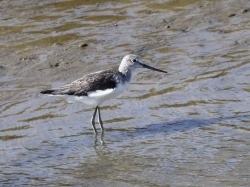
Greenshank
Just back, 7 November, from a great week in Huelva Province when able to visit all the local birding sites including the Donana National park, Isla Mayor and the Odiel Marshes to the immediate west of Huelva. Absolutely fantastic birding in the great company of Eric and Pat Lyon plus the lady wife. Eventually, a total of 114 species recorded with some great sightings including both Little and Great Bustard, Squacco Heron, Great White Egret, Black and White Stork, Crane, Pintail, Black ulture, Black-shouldered Kite, lots of Red Kites, Marsh Harriers and Common Buzzards plus a pair of Hen Harriers. And what about a sighting of a Spanish Imperial Eagle keeping a weary eye or two on the neighbouring small band of Griffon Vultures?
The waders included Oystercatcher, Whimbrel, Curlew, both Godwits, Spotted Redshank and Green Sandpiper. Then add Kingfisher, Hoopoe, Crested Lark and Skylark, a very late Barn Swallow on the last day, Dartford Warbler, Azure-winged Magpie and loads of Ravens.
However, strange as it may seem, I was, perhaps, most pleased/ surprised to record a pair of female Bullfinches; the last small bird I expected to record! Similarly, the journey home on the final day was rewarded with the long-range sight of a dozen Great Bustard and, at the same time, in front of the scope a flock of well in excess of 1000 starlings which included many Common (spotted!) Starlings.
As soon as I recover, the whole adventure will be written up on the blog (see next page).
The waders included Oystercatcher, Whimbrel, Curlew, both Godwits, Spotted Redshank and Green Sandpiper. Then add Kingfisher, Hoopoe, Crested Lark and Skylark, a very late Barn Swallow on the last day, Dartford Warbler, Azure-winged Magpie and loads of Ravens.
However, strange as it may seem, I was, perhaps, most pleased/ surprised to record a pair of female Bullfinches; the last small bird I expected to record! Similarly, the journey home on the final day was rewarded with the long-range sight of a dozen Great Bustard and, at the same time, in front of the scope a flock of well in excess of 1000 starlings which included many Common (spotted!) Starlings.
As soon as I recover, the whole adventure will be written up on the blog (see next page).
Andalucia Bird Society Field Visit

Griffon Vulture
Sunday 25 October and a very enjoyable field visit arranged by Peter Jones on behalf of the Andalucia Bird Society. Leaving Estacion de Benoajan at just after ten in the morning, 19 of us were able to spend almost three hours in the sierras above Montejaque at Llanos de Libar. Excellent and friendly company and, whilst we may not have seen the illusive Wallcreeper, we did see lots of Ring Ouzel, Alpine Accentor, Black Wheatear, Blue Rock Thrush, a range of warblers and tits and, of course, many, many Griffon Vulture. A feeding Lesser kestrel was also a joy to behold. See "Blog" (link on next page) for birding details.
Also of note was the magnificent scenery of the Rio Guardiaro valley and the very pleasant pueblos of Montejaque, Benaojan and Jimera de Liar. A wonderful scenic drive between the last two and, of course, there is also a beautiful riverside walk. Paul Darwent of the Bar Allioli at Jimera de Libar has helped produce a super A4 brochure advertising the benefits of a visit to this part of the region, his "Secret Andalucia", and I can thoroughly recommend all to travel and enjoy this wonderful, beautiful and gorgeous scenery. For further information, visit their web site (www.secretandalucia.com) (CLICK HERE).
I can also very much recomment the hospitality of the Bar Allioli's owners, Paul and Synnove Darwent, who made my overnight stay such a pleasure - and also prepared a most succulent steak for my dinner!
Also of note was the magnificent scenery of the Rio Guardiaro valley and the very pleasant pueblos of Montejaque, Benaojan and Jimera de Liar. A wonderful scenic drive between the last two and, of course, there is also a beautiful riverside walk. Paul Darwent of the Bar Allioli at Jimera de Libar has helped produce a super A4 brochure advertising the benefits of a visit to this part of the region, his "Secret Andalucia", and I can thoroughly recommend all to travel and enjoy this wonderful, beautiful and gorgeous scenery. For further information, visit their web site (www.secretandalucia.com) (CLICK HERE).
I can also very much recomment the hospitality of the Bar Allioli's owners, Paul and Synnove Darwent, who made my overnight stay such a pleasure - and also prepared a most succulent steak for my dinner!
Axarquia Bird Group - Change of Date
Please note that the visit to Fuente de Piedra In December has now been brought forward one week to Thursday 3 December. As before, meet in the car park at 9.30 but further details will be emailed nearer the time.Posted 22 October 2009
Rare bird seen in the Axarquia
Danish visitor staying in Nerja managed to record a House Bunting in the town on 13 October. Photographs were taken and I understand from Andy Paterson that, if accepted by the Spanish rarities committee, this will be only the second record in Spain of the House Bunting. The nearest natural habitat for these very common and inquisitive birds that seem to show no fear of man is across the Straits in Morocco.
Posted 22 October 2010
Dias de las Aves (The Day of the birds - International Birding Day)
The week-end of 3rd and 4thOctovber was the International Birding Awareness Day(s) and in our area I was able to visit two separate events with friend Eric Lyon; the fist "Bird Fair" organised by the lovely village of Casarabonela on the edge of the Sierra de las Nieves on the Saturday and the following day a practical event at the Guadalhorce Reserve in Malaga organised by the local branch of SEO (Sociedad Espanola de Ornitologia).
Guadalhorce, Malaga
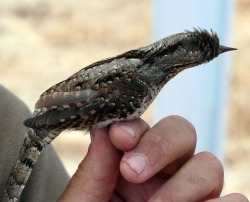
Wryneck awaiting release
Sunday, 4 October 2009
Compared with Saturday at Casarabonela, the SEO presentation at the Guadalhorce was a very much "hands on" affair. No sooner had we arrived at 9.30 Sunday morning than all the local birders and their families seemed to start turning up. Hides were quickly filled and an atmosphere of bonhomie and camaraderie filled the air. Great, but what about the bird-watching?
Eventually, Eric, Andy and I arrived at the Malaga "Ringers'" portable gazebo and were able to see that the ringing was well under way with three active ringers and their support team of scribes and handlers and at least another twenty small birds waiting to be processed. Already lots of interest from the audience, which seemed to range from about 4 to 84 years! To keep the youngsters (you decide what age group that covers!), especially, enthralled, when processed the birds were gently and safely transferred to willing young hands for the latter to actually carry out the release. How lovely to see all involved and direct participation in the practicalities of the process.
Similarly, it was a lovely surprise to see Nigel and Leigh Beaton supporting the event having only met the couple the previous day and informed them of this event. I am sure that they must have enjoyed the experience, especially the birds to be seen at such very close quarters.
The birds being process had been caught in mist nets strung out in the neighbouring cover, and away from the general public in order to preserve the birds' safety and well-being, and included mainly warblers and other small passerines. Blackcaps of both sexes, Robins, Garden Warblers and Willow Warblers seem to be the dominant species when we were present but their was a gorgeous Kingfisher in the hand to be followed by a Wryneck. Blackbirds had to wait their turn. For those who have only seen these lovely small birds in bushes and tress, and often ten or more metres away, here was a chance to see the "real McKoy" at close quarters, see the difference in the crown colouring of a Blackcap, the pattern on the Wryneck's back, the bill colouring of the Kingfisher by which we both age and sex the bird and, perhaps interestingly, the strange identification of a Garden Warbler. Even at extremely close quarters, yo can see why when identifying this particular bird, that the clue is to look for No special marking or distinguishing feature. Indeed, this is how we identify the Garden Warbler; it has no distinguishing features!
All very lovely and a happy reminder of the twenty years I spent as ringer, under the direction of the British Trust for Ornithology (BTO), before having to concentrate on educational and business matters, rather than all week-ends ringing and birding, being the headteacher of the first Grant Maintained School in Britain. Happy days!
And so, the three of us continued our birding (see blog for full details) whilst the public continued to arrive by the score and proved, hopefully, another great success for SEO in Malaga.
Compared with Saturday at Casarabonela, the SEO presentation at the Guadalhorce was a very much "hands on" affair. No sooner had we arrived at 9.30 Sunday morning than all the local birders and their families seemed to start turning up. Hides were quickly filled and an atmosphere of bonhomie and camaraderie filled the air. Great, but what about the bird-watching?
Eventually, Eric, Andy and I arrived at the Malaga "Ringers'" portable gazebo and were able to see that the ringing was well under way with three active ringers and their support team of scribes and handlers and at least another twenty small birds waiting to be processed. Already lots of interest from the audience, which seemed to range from about 4 to 84 years! To keep the youngsters (you decide what age group that covers!), especially, enthralled, when processed the birds were gently and safely transferred to willing young hands for the latter to actually carry out the release. How lovely to see all involved and direct participation in the practicalities of the process.
Similarly, it was a lovely surprise to see Nigel and Leigh Beaton supporting the event having only met the couple the previous day and informed them of this event. I am sure that they must have enjoyed the experience, especially the birds to be seen at such very close quarters.
The birds being process had been caught in mist nets strung out in the neighbouring cover, and away from the general public in order to preserve the birds' safety and well-being, and included mainly warblers and other small passerines. Blackcaps of both sexes, Robins, Garden Warblers and Willow Warblers seem to be the dominant species when we were present but their was a gorgeous Kingfisher in the hand to be followed by a Wryneck. Blackbirds had to wait their turn. For those who have only seen these lovely small birds in bushes and tress, and often ten or more metres away, here was a chance to see the "real McKoy" at close quarters, see the difference in the crown colouring of a Blackcap, the pattern on the Wryneck's back, the bill colouring of the Kingfisher by which we both age and sex the bird and, perhaps interestingly, the strange identification of a Garden Warbler. Even at extremely close quarters, yo can see why when identifying this particular bird, that the clue is to look for No special marking or distinguishing feature. Indeed, this is how we identify the Garden Warbler; it has no distinguishing features!
All very lovely and a happy reminder of the twenty years I spent as ringer, under the direction of the British Trust for Ornithology (BTO), before having to concentrate on educational and business matters, rather than all week-ends ringing and birding, being the headteacher of the first Grant Maintained School in Britain. Happy days!
And so, the three of us continued our birding (see blog for full details) whilst the public continued to arrive by the score and proved, hopefully, another great success for SEO in Malaga.
Casarabonela
Saturday, 3 October 2009
Casarabonela:
This was a very friendly event supported by the local Town Hall and culminated in free drinks and tapas, always very welcome on a very hot day. Arriving about 10.30, we met up with Ian Shreeves, the local birder, who had played a prominent part in the concept and organisation of the week-end; a way to introduce and encourage morerural tourism and get people away from the beaches to appreciate the wonders and natural history of inland Spain. Lots of very colourful stalls in the plaza Mayor and the speciality of the day, the release of six raptors which had been rescued/recovered and cared for in the neighbouring community of Tollox.
First three Kestrels followed by a Booted Eagle, Back Kite and, finally, a magnificent and very fiesty Eagle owl. I know because I was standing next to the warden when the bird was removed from its carrying box and took the opportunity to spread its wings, catching me full in the face.
The usual species to start the proceedings and at least a hundred present including many birders from neighbouring areas. A lovely surprise to see Patricia Shaw from Nerja and then introduced to a very pleasant couple, Nigel and Leigh Beaton from Mijas with their daughter Corrin. All being well, it will be great to see Nigel and Leigh at one of our future Axarquia Bird Group field visits.
All in all, a very pleasant few hours and then it was time to undertake the "Bird Walk". Not for us the group event using the track; no, the Beatons, Eric and I took the 2.5 km narrow path up through the woods to the top. Here we had marvellous views over the surrounding countryside, met up with the "taxied" birders who used a Landrover and were shown the nesting site of the resident Bonelli's Eagle who have successfully brought off chicks for, at least, the last five years.
Not the number of birds to be seen that we had expected but, nevertheless, a most enjoyable day in very friendly company in a beautiful setting.
September Birding Total
Best month to date for species recorded with a final total of 150 exactly. Amazing when you consider some of the birds that I did not see this month including Pallid Swift, Robin, Blue Tit, Coal Tit, Long-tailed Tit, Firecrest, Short-toed Treecreeper, Robin, Cirl Bunting and Rock Sparrow. The final total included:
14 Grebes, Herons, Storks, etc
8 Ducks
16 Raptors
17 Waders
13 Sea Birds
6 Larks
7 Hirundines & Swifts
4 Wagtails
11 Chats & Thrushes
11 Warblers
12 Finches, Buntings & Sparrows
7 Corvids
Axarquia Bird Group Visit to Charca de Suarez
A total of eighteen joined the monthly visit on Friday, 25 September to this great little reserve on the western outskirts of Motril followed by a look at the wild area "Motril Marshes" on the adjacent, ex sugar cane land. See blog for full details including sightings of Wryneck, Kingfisher, Gadwall and Red-crested Pochard with White Stork, Booted eagle and Marsh Harrier overhead.
Bird Collective Nouns
A wonderful gourmet of names to both keep you amused and use in your Bird reports. CLICK HERE for access to the list provided by British Bird Lovers
